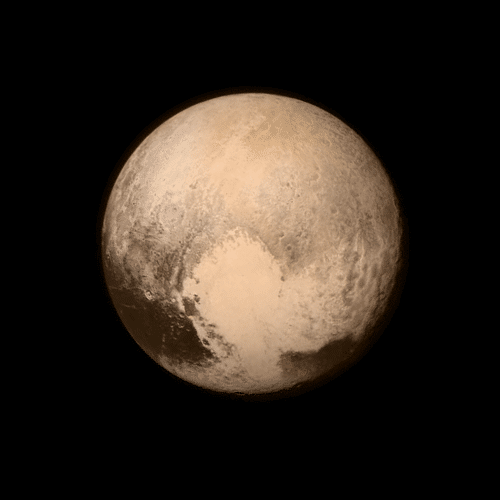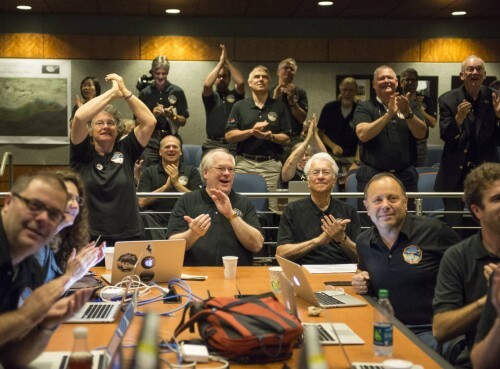The spacecraft's chief scientist - Alan Stern: New Horizons is currently writing the textbooks on Pluto

NASA reports that the New Horizons spacecraft made a flyby of Pluto earlier today, from a distance of about 12,600 kilometers, becoming the first spacecraft to explore a world so far from Earth.
As planned, the New Horizons spacecraft is currently in data collection and communication with flight controllers at the Applied Physics Laboratory at Johns Hopkins University in Maryland. The scientists are waiting to see if New Horizons will "call home" and send a series of status updates indicating that it survived the transition and is in good condition. This "conversation" is expected at nine past EST, four in the morning Israel time on July 15.
As we described in previous articles, the story of Pluto began only a generation ago when young Clyde Tombaugh searched for Planet X, which, according to the theory, was supposed to be found beyond the orbit of Neptune-Rahab. He discovered a pale point of light that today we observe as a complex and fascinating world.
New Horizons' pass by the dwarf planet and its five known moons provides a close-up look at the Kuiper Belt - an outer region inhabited by icy objects ranging from the size of mountains to the size of dwarf planets. The Kuiper belt itself like Pluto preserves evidence about the early days of the solar system.
"I am pleased with NASA's achievement, another first that illustrates once again how the United States is the world's leading power in the field of space," says John Holderen, President Obama's assistant and the White House's adviser on science and technology.
"New Horizons is the latest in a long line of scientific achievements at NASA including missions that orbit more than one space body and the impressive Kepler space telescope that detected Earth-like planets orbiting other stars. In addition, the soon-to-be-launched DSCOVR satellite will provide real-time images of the entire Earth from a distance of 1.5 million kilometers.
As New Horizons completes its flyby of Pluto and continues deep into the Kuiper Belt, NASA's multi-purpose mission will continue to make discoveries.

"The exploration of Pluto and its moons by New Horizons adds another dimension to NASA's celebration of 50 years of planetary exploration in space," says NASA Administrator Charles Bolden. "Once again the first to achieve a historic achievement. The US is the first to reach Pluto and thereby complete the initial survey of the solar system, an achievement that no other country can achieve."
The mission's science director, Alan Stern of SwRI in Colorado, says the spacecraft is writing the textbook about Pluto: "The New Horizons team is proud of the achievement of being the first spacecraft in the Pluto system," says Stern. "This spaceship has provided inspiration to people all over the world thanks to the excitement of exploring the Hal and what humanity is capable of achieving."
New Horizons, which has been flying for almost ten years and covered a distance of about 5 billion kilometers, was one minute ahead of the transition moment, as planned when it was launched in January 2006. The spacecraft passed through a window measuring 60 by 90 kilometers in space - the equivalent of a jet plane reaching the distance of a bullet Tennis is their destination.
Because New Horizons is the fastest spacecraft ever built, it flies through the Pluto system at a speed of 50 km/h. A collision with a small grain at such a speed can destroy the hull. Once you reconnect, it will take 16 months to send all the information I collected back to Earth.
For information on the NASA website
More on the subject on the science website"
- Technion researchers have proposed a model for finding new moons for Pluto, awaiting New Horizons photographs
- New Horizons revealed: Pluto's diameter is 2,370 km
- New Horizons approaches Pluto - photographed the enigmatic dark spots
- Discoverer of Pluto, the girl who gave him his name and the actor Leonard Nimoy will be commemorated on Pluto and Charon
- A historic meeting
- A whale on Pluto
- Pluto - a point of light in the darkness

4 תגובות
Why does the spaceship disconnect until four in the morning?